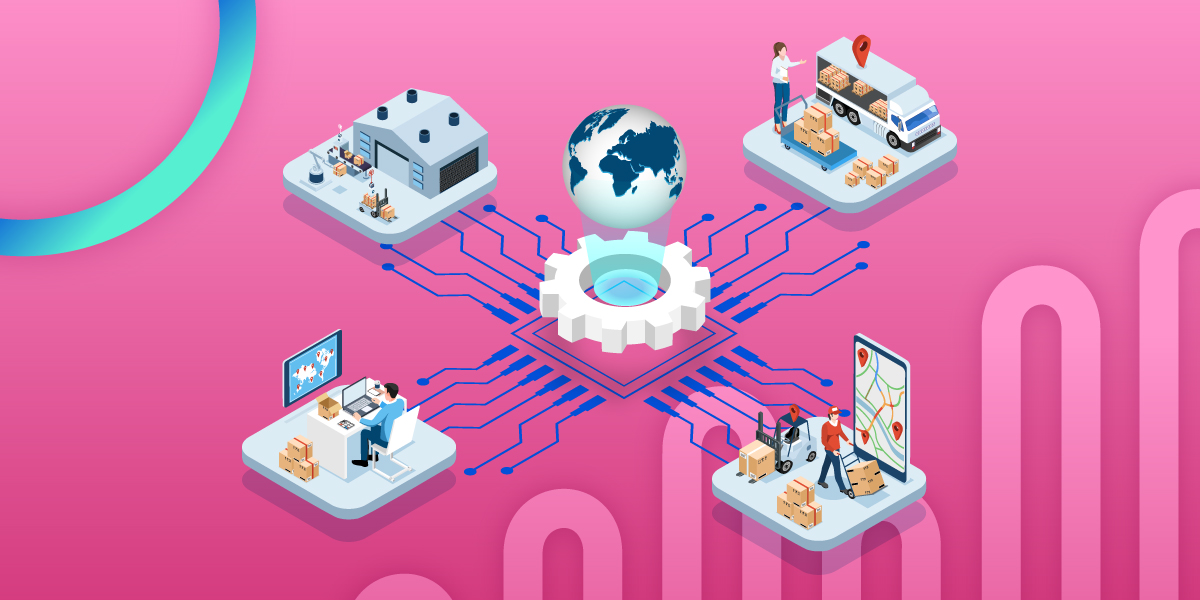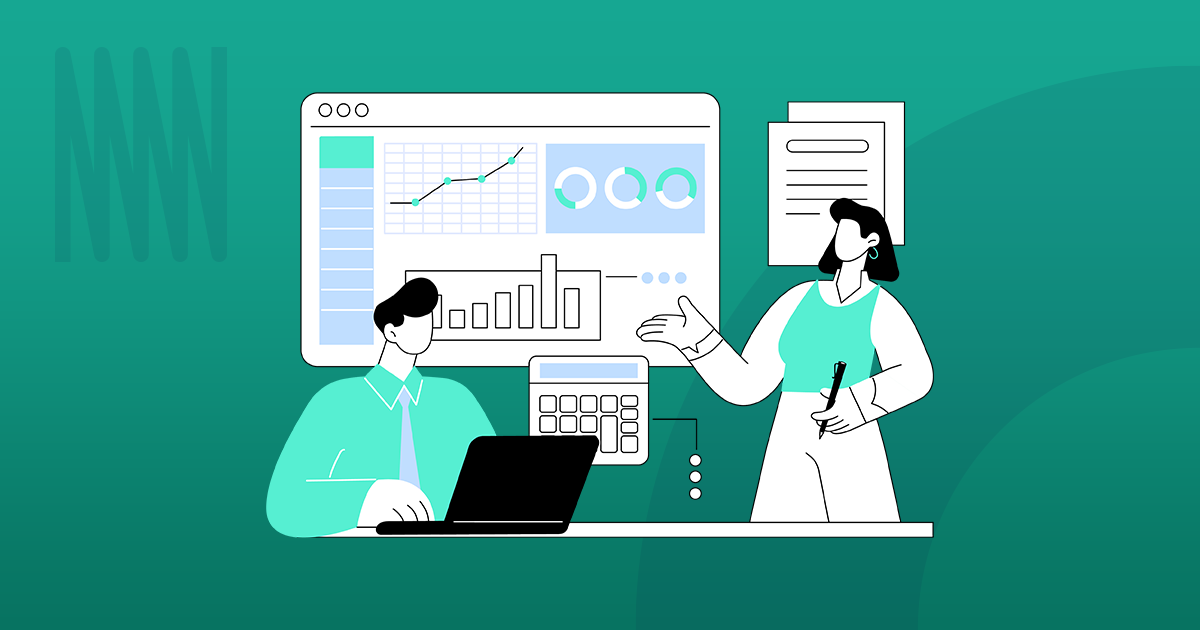B2B Ecommerce: How to Make Online Sales in 2024

B2B ecommerce is on the rise.
According to Forrester, the B2B ecommerce market will reach $3 trillion by 2027—in the U.S. alone. That figure represents a whopping 7% jump in a five year period. Not bad!
Want to claim your piece of the pie? You need to invest in modern technology, connect with potential customers, and make sales via the internet. Don’t worry, we’re here to help.
Keep reading to learn what B2B ecommerce is and why it’s important, the various B2B ecommerce platforms available and how to choose one, how to leverage B2B ecommerce strategies to propel your company forward, and a whole lot more.
We have a lot to get to, so let’s dive right in!
B2B Ecommerce 101: Meaning, Examples & Benefits
We’ll start with the basics…
What is B2B commerce? What does B2B ecommerce look like in the real world? And why is B2B ecommerce important to the future of your company? Let’s discuss:
What is B2B Ecommerce?
Business-to-business electronic commerce, better known as B2B ecommerce, is the process of selling products and/or services to other businesses via the internet.
This is different from business-to-consumer electronic commerce, AKA B2C ecommerce, which is the process of selling products and/or services to end consumers, also via the internet.
B2B ecommerce has numerous benefits, which we’ll cover in a bit. Before we get to that, however, we need to talk about the different types of B2B ecommerce:
B2B2C
B2B2C stands for “business to business to consumer“. It refers to a business model in which two different companies (like a manufacturer and a retailer) form a partnership to better serve buyers. The B2B2C model can help B2B businesses connect with their target audience and make more sales—oftentimes without having to deal with customers directly. The ecommerce explosion gives B2B businesses even more opportunities to benefit from B2B2C models.
Wholesale
Wholesalers purchase products from manufacturers at discounted rates; then sell them to retailers at full value. In other words, wholesalers are the middlemen in a typical supply chain. Manufacturers enjoy this arrangement because it allows them to focus on what they do best: creating products. Retailers also enjoy this arrangement because they often have access to more product supply. Overall, wholesale is one of the more popular B2B business models. Wholesale ecommerce is growing in popularity as well, because it offers the benefits of traditional wholesale arrangements with the convenience of the online sale.
Manufacturer
Manufacturers create finished products from raw materials. In the B2B sales process, said products are then sold to other manufacturers, suppliers, and or wholesalers. (Note: manufacturers can sell products in a business-to-consumer way, too. But this would be considered a B2C sales process.) While it’s far from the standard practice, many manufacturers now embrace B2B ecommerce sales. This helps them meet the evolving expectations of business buyers, from wholesalers to distributors to channel partners.
Distributors
Distributors partner with manufacturers to sell finished products. The exchange of services between businesses is mutually beneficial. Distributors are compensated for closing deals and distributing products. And wholesalers can avoid the headaches associated with packaging, marketing, and selling their wares. When it comes to online sales, distributors typically rely on an ecommerce platform, or B2B marketplace, or both. These tools help distributors connect with potential customers online, drive revenue, and otherwise benefit from this business model.
What Does B2B Ecommerce Look Like?
There’s no “one size fits all” approach to B2B ecommerce. This can make it difficult to understand what B2B ecommerce actually looks like in the real world. To clear things up for you, we share examples for each of the B2B ecommerce types we talked about in the last section:
B2B2C
An electronics manufacturer can list its products on online marketplaces like Amazon, eBay, and Walmart. Said marketplaces then display the products, offer various payment options, and otherwise facilitate the sales process. Depending on the marketplace used, orders are either packaged and shipped by the electronic manufacturer themselves or the marketplace. Customer service is handled in a similar way, though this can vary between marketplaces.
Wholesalers
A clothing manufacturer sells clothing to a wholesaler in bulk, at a discount rate. The wholesaler who bought the clothes then sells them to retail outlets like Walmart and Target—but not before increasing the price of each garment. To streamline the process, the wholesaler uses a wholesale ecommerce platform to display products and facilitate every business transaction.
Manufacturers
An auto manufacturer builds car parts like fuel pumps and timing belts. These parts are then sold to car companies like Toyota and Chevrolet, who use them to complete the vehicles they sell to end consumers. While the auto manufacturer used to only sell its products to car companies via the phone and mail-in order forms, it’s now digitized its inventory so car companies (as well as hobbyists) can shop for parts from the manufacturer’s website.
Distributors
A well-loved toy manufacturer wants to focus on its core competency: making toys that kids want to play with. To do this, the manufacturer partners with a distributor. Said distributor receives a discount on every B2B purchase they make in exchange for warehousing, packaging, and shipping the toys they sell through online marketplaces. To increase revenue, the distributor builds similar business-to-business relationships with other manufacturers.
Why is B2B Ecommerce Important?
We know what you’re thinking, “Why does any of this matter to me and my organization?” Because B2B ecommerce can be very advantageous. Here are a few benefits you could enjoy:
Lower Costs
B2B ecommerce will save your company money.
Think about the expenses you incur by using the traditional sales model. You have to employ an army of sales reps. You have to pay for said reps to travel to different locations. And you need to buy a litany of apps to increase rep productivity and effectiveness.
Traditional sales models work. But you can save a ton of green by reducing typical expenses and selling from a website or online marketplace.
Greater Productivity
With B2B ecommerce, sales reps don’t have to personally close every deal.
They can do the leg work, then let customers complete B2B transactions from the convenience of your company’s website. This will make your reps WAY more productive.
Speaking of productivity, many B2B ecommerce processes can be automated. Once you’re set up with the right tools, you can collect data, create packing slips, send payment reminders, and more on autopilot. Doing so will free up reps to focus on other tasks.
Better Customer Relationships
Want to improve your business? Level up your brand’s relationship with business buyers. This is easier said than done, of course. But B2B ecommerce makes it possible.
Your target audience wants to maintain autonomy and purchase products online. By meeting these kinds of customer expectations, you can improve the buying process and customer loyalty. This is essential as customer acquisition costs have risen by 60% in the last five years.
A Brighter Business Future
Finally, B2B ecommerce will help you sell to a wider range of customers. After all, you won’t be restricted by geography. You can literally sell to anyone, anywhere.
Imagine how much easier it will be to scale your business. You’ll be making business-to-business transactions like they’re going out of style. And you’ll continue making them as the business world evolves and online transactions become more important.
Just make sure you understand your B2B customers first…
What Everyone Misunderstands About B2B Customers
Business-to-business transactions are nothing new. Still, the people who make these kinds of purchases are often misunderstood. This is especially true when it comes to B2B ecommerce.
To sell products on the internet, B2B merchants need to internalize these four truths:
B2B Customers Want to Buy Online
71% of B2B buyers are Millennials or Gen Zers.
These generations grew up with the internet. As such, they’re incredibly comfortable making purchases online. In fact, many of them prefer it over traditional, face-to-face processes.
B2B ecommerce strategies will help you cater to a wider range of customers. Sure, your sales reps can still meet buyers in-person to close deals. Boomers and Gen Xers might appreciate this approach. But a significant portion of your audience wants to buy online. Give them this option and you’ll make more sales, drive more revenue, and achieve more success.
Price Transparency isn’t Necessary
B2C customers want to know pricing immediately. While B2B buyers appreciate this level of transparency, it won’t prevent them from making a purchase.
This is good news. Most B2B companies keep pricing private, which helps protect their slim margins and fend off competitors who want to undercut their rates. Price visibility would also make it difficult to offer customized packages to each prospect in the pipeline.
B2B ecommerce platforms will allow your business to hide pricing until customers login to their accounts. Automated price personalization tools can also be used to generate custom pricing for each customer. Both of these things will keep customers happy and your business thriving.
B2B Ecommerce Orders Can be Customized
B2B customers have a thing for customization. They want to buy products and services that suit their exact needs, at price points that fit their unique budgets. The common perception is that B2B ecommerce can’t facilitate this level of personalization. That way of thinking is wrong.
For example, a B2B customer can contact a supplier to request a custom quote. Said quote can then be created, sent, and approved. Once this happens, the B2B customer in question can be put in their own group. That way future orders can be made with a few clicks.
B2B Customers Will Make Large Online Purchases
As mentioned earlier, a majority of B2B buyers are Millennials and Gen Zers. These people grew up with the internet. To them, making purchases online is normal—even big purchases.
In fact, 77% of business buyers are willing to spend $50,000 in a single online transaction. And 35% of business buyers are willing to spend $500,000.
People often think that B2B ecommerce is for small, inconsequential purchases. The research proves otherwise. Business customers are more than happy to spend big on the internet.
How to Build a Winning B2B Ecommerce Sales Strategy
B2B ecommerce can be a powerful tool in your company’s selling arsenal. You just have to go about it the right way. The five-step process below will make sure you do.
1. Identify Your Goals for B2B Ecommerce
First, decide what you want to achieve with your B2B ecommerce sales strategy.
Do you want to reach a new customer segment and increase revenue? Do you want to improve sales rep productivity, while lowering overhead costs? Maybe you’re looking to create more personalized customer experiences and supercharge customer loyalty.
All these things are possible. You just need to decide which goals you want to pursue. Once you know the answer, you can plot a straightforward route to success.
Now, before we move on to the next section, we need to talk about SMART goals. SMART is an acronym that stands for Specific, Measurable, Achievable, Relevant, and Time-Bound.
- Specific: Decide exactly what you want to achieve
- Measurable: Choose metrics to measure your progress
- Achievable: Pick goals that you can actually accomplish
- Relevant: Ensure your goals correlate with company-wide aims
- Time-Bound: Give your goals a specific deadline
We’ll be honest with you: building an effective B2B ecommerce sales strategy takes time and effort. SMART goals will keep you and your team motivated through the hard times.
2. Choose the Right B2B Ecommerce Technology
Now that you know what your goals are, you can select B2B ecommerce technology to achieve them. There are a myriad of options for you to choose from in this regard.
For example, you’ll need software to build an online storefront. That way individual customers can look through your product inventory in real time and make orders.
We suggest using customer relationship management (CRM) software too, if your sales team doesn’t already have this kind of solution. The right CRM will make it easier for sales reps to organize customer data, review past interactions, and even predict future sales.
There are tons of other tools you could invest in as well. For instance, you can purchase search engine optimization (SEO) software to help you website rank in Google searches. Or automation apps to simplify tasks, personalize experiences, and boost customer satisfaction.
We’ll talk more about B2B ecommerce platforms in a later section of this article. For now, just know that you’ll need technology to build an online sales portal for your company. The technology you choose can make or break your efforts in this area. To choose wisely…
- Identify the features you need for your online store
- Read reviews to discover which tools are best received
- Keep your budget in mind so you don’t overspend
- Sign up for free trials and/or product demonstrations
These four simple tips will help you choose B2B ecommerce technology that suits your business needs and creates a better online experience for your customers.
3. Promote Your B2B Ecommerce Capabilities
You’ve worked hard to build an amazing online store, paying special attention to everything from the colors used to the payment options offered. Great job! Now what?
Now it’s time to tell the world that your company accepts online orders.
The whole, “if you build it, they will come” thing only works in the movies. You need to actively promote your B2B ecommerce capabilities to your current and prospective customers.
You can do this in a variety of ways. For example, you can put a digital banner on your website’s homepage that says, “Now Accepting Online Orders”. Or send a message to your company’s email list to announce the news. Or post about it on your social media channels. Or write up a press release and send it to relevant news outlets. Or do all these things.
It doesn’t matter which marketing strategies you use to get the word out about your foray into B2B ecommerce. Just make sure your target audience knows about it.
4. Always Put Your Target Customers First
Your B2B ecommerce sales strategy should revolve around your customer base.
Ask yourself questions like, “What do different customer groups need from my online store?” And, “How can I improve user experience to make our website one of our best sales channels?”
You might think the latest B2B ecommerce trends are silly. But if your customers are super into them, you need to accommodate. Speaking of trends, here are a few to keep in mind:
- High-quality visuals
- Thorough onsite search
- Plenty of social proof
- Personalized experiences
- Complete online catalogs
- Flexible shipping options
- Mobile device compatibility
- Access to customer support
Now, you don’t have to give into every trend above. Instead, get to know your target audience and study customer behavior. Then take action based on their unique preference.
5. Iterate and Improve Your Approach to B2B Ecommerce
Finally, study your B2B ecommerce efforts.
Are you making digital sales, delighting customers, and finding success? Have you hit a few challenges that you need to overcome? Maybe it’s a combination of both?
Identify the things that your new ecommerce site does well and do more of them. Then pinpoint the areas it falls short and brainstorm ways to fix it.
For example, you might find that customers love the extensive product catalog you’ve added to your site. Great! Continue to add new products as they become available. On the other hand, you may discover that your automated product recommendations are a bit hit or miss. In this scenario, you’d need to refine the purchase suggestions customers receive.
So, how do you determine what works and what needs to be improved? You analyze on-site customer behavior and the specific metrics you’ve chosen to measure your goals.
Tools like Mouseflow will help you understand how customers interact with your B2B ecommerce website via heatmaps and session recordings. And metrics like conversion rate, percentage of orders made through your website, and average order value will help you learn if your current marketing and sales tactics are bearing fruit. You can then adjust your approach.
7 Best Practices to Leverage B2B Ecommerce Effectively
The five-step process above will get you started with B2B ecommerce. But if you really want to thrive with this sales strategy, implement the following best practices.
1. Take Advantage of Automation
Want to supercharge team productivity and increase customer satisfaction? Build automated sales processes and enjoy one of the major advantages of B2B ecommerce.
Here’s a list of things that B2B online stores can automate:
- Inventory management
- Email and text notifications
- Identification of high-risk orders
- Customer support processes
- Product recommendations
- Payment processing
- Vendor and supplier onboarding
- Customer data collection
This list is by no means complete. Automation can help you streamline many other B2B ecommerce workflows, too. You just need to invest in the right tools and get creative.
So, take time to experiment. Look at your current processes and ask yourself, “Can we do this better?” If so, look for ways that technology can eliminate manual tasks. Like we said, this will make your team more efficient. It will also reduce errors that could lead to extra expenses.
2. Create Personalized Experiences
When it comes to ecommerce (business-to-business or business-to-consumer) personalization is the name of the game. Your customers want custom solutions. Simple as that.
Here’s the good news: when you meet these kinds of customer expectations you’ll build deeper relationships with your target audience and inspire greater loyalty. This is a big deal since a 5% bump in customer loyalty can increase company profits by 25%.
This begs the question, how do you personalize B2B ecommerce processes? There are plenty of ways to create custom experiences for customers. Here are a few common ones:
- Segment your audience into multiple customer groups
- Offer different prices to different customers based on value
- Use buying history to send relevant product recommendations
- Give customers multiple payment options during checkout
- Build personalized sales portals to simplify the ordering process
- Send different marketing messages to each of your customer segments
According to McKinsey and Company, fast-growing companies drive 40% more revenue from personalization than slow-growing companies. Want to take your B2B business to new heights? Meet the needs of individual consumers. They will reward you for it.
3. Market Your Ecommerce Website
A stellar B2B ecommerce website won’t benefit your business if no one sees it. That’s why you need to take a strategic approach to marketing. Fortunately, it’s not rocket science.
- Commit to SEO: Search engine optimization (SEO) techniques will help you rank web pages in Google search results. Once you learn to use keywords, structure articles the right way, etc. you’ll drive tons of targeted traffic to your website for free.
- Invest in Email Marketing: Want to reach your target audience? Use email, which produces $36 to $40 for every $1 spent. Most other digital channels can’t come close to this level of ROI. Build a list of subscribers; then message them about your online store.
- Use Social Media Platforms: Is your B2B company on LinkedIn? What about Facebook and Instagram? If the answer is “yes” use these channels to promote your ecommerce website. Just remember to engage with your followers on a regular basis.
- Splurge on Paid Advertisements: Paid ads will help you drive traffic to your online storefront. Google, LinkedIn, Facebook, and others will happily display your marketing messages in exchange for money. Done right, this tactic can produce quality leads.
- Partner With Other Organizations: Strategic partnerships can drive traffic to your ecommerce website, too. For example, you can partner with another brand that serves a similar audience to promote a new product launch. Or work with an influencer in your niche to reach new customers. Either way, your business will benefit.
4. Emphasize Speed of Delivery
Your customers will never want to wait longer to receive orders. So, if you can swing it, offer fast shipping times. Then promote this value proposition everywhere.
Now, “fast shipping times” doesn’t necessarily mean two days or less. Your customers know that the B2B supply chain moves at a snail pace. Just try to get products to customers faster than the competition. If you do, you’ll probably retain them for longer periods of time.
Also worth mentioning, partnerships with other companies might help you reduce shipping times. Instacart‘s Big and Bulky offering, for example, helps retailers offer same-day delivery of large items like furniture and appliances. Something similar could work for you.
5. Streamline the Checkout Process
A frictionless checkout process will help you sell more via online channels.
When potential customers have trouble checking out, they get frustrated. This frustration often leads to abandoned carts, lost revenue, and a poor reputation in the marketplace.
Pay special attention to your B2B commerce website’s checkout process. Make sure it’s quick and easy for prospects to go through. Offer multiple payment options to satisfy every buyer. (This includes buy now, pay later plans). And give customers speedy shipping options.
Bonus tip: the checkout process is a great time to offer personalized product recommendations. Doing so could increase your average order value by a significant amount.
6. Consider Using a Subscription Model
The subscription model will help you increase customer loyalty and drive consistent revenue. These things make it much easier to build a sustainable B2B business.
Of course, not every company can offer subscriptions. You need to sell consumable goods. Or, at the very least, goods that must be maintained on a regular basis. (That way you can sell service-based subscriptions for maintenance rather than product-based ones for goods.)
But if the subscription model is an option for your company, you should definitely consider it. Not only will you enjoy greater customer loyalty and consistent revenue, but you’ll also have access to unique customer data and the chance to build more efficient internal processes.
7. Create a Customer Referral Program
Every sales rep knows that referrals are worth their weight in gold. Many of these leads become customers. Even better, they often take less “selling to” than other leads.
Increase referrals for your B2B ecommerce website by creating a referral program.
For example, you can give customers a gift card when they review your company on relevant review sites. Or offer them a discount on future purchases if they post about your B2B business on LinkedIn. You can even offer cash prizes for every referred lead that becomes a customer.
There are tools you can use to build extensive referral programs if needed. ReferralCandy and Referral Rock are popular options. Both will make it easy to build an effective referral program.
Whatever you decide to do, look for ways to increase referrals and your brand will benefit.
Everything You Need to Know About B2B Ecommerce Platforms
We talked about technology in a previous section. But B2B ecommerce platforms are so important to the success of your online store, we wanted to spend more time on them.
What is a B2B Ecommerce Platform?
A B2B ecommerce platform is a piece of software that allows B2B companies to sell their products and/or services online. Customers can use the platform to peruse product catalogs, read reviews, compare options, input payment info, and otherwise complete the online buying process. As such, these B2B platforms are essential to ecommerce for B2B brands.
Why Are B2B Ecommerce Platforms Important?
B2B ecommerce platforms enable B2B companies to sell products and services online. Doing so helps them connect with more customers and drive more revenue. While many website builders and other apps allow companies to close deals online, B2B ecommerce solutions are specifically designed for B2B business. Because of this, they have the key features B2Bs need.
What Features Should Your B2B Ecommerce Platform Have?
Every business-to-business company is different. But most, if not all of them should invest in a B2B ecommerce platform with the following features:
- Different storefronts for B2B and DTC customers
- The ability to create personalized accounts for each customer
- A way to build personalize customer experiences at scale
- Plenty of space for detailed product descriptions and visuals
- The option to adjust pricing based on predetermined factors
- Multiple payment options to satisfy various customer preferences
What Makes a B2B Ecommerce Platform Great?
There are plenty of B2B ecommerce solutions out there. Why are some of them better than others? There are many potential reasons, but we’ve identified four common ones.
First, the ideal B2B ecommerce platform is easy to use. You shouldn’t want to pull your hair out every time you add products or adjust web pages on your site.
Second, the B2B platform you invest in should be customizable. That way you can adjust it to meet your exact needs. This will help you build a stellar online store now. It will also ensure your tool of choice scales with your B2B business as it secures new customers and grows.
Finally, top-level B2B ecommerce solutions are secure. Private customer information needs to remain private. Just as important, customers need to believe their personal details will be kept safe. If they don’t, you’ll never make as many ecommerce sales as you want.
Streamline Your Sales Process With B2B Ecommerce
B2B ecommerce is the future.
As time passes and younger generations assume managerial roles, the desire to purchase business products online will only increase. By jumping on the bandwagon now, you can help your company meet the growing market demand and outpace its competition. Win!
To succeed with B2B ecommerce, use the five-step strategy we outlined in this article. Then implement the best practices we covered to supercharge your efforts and drive more revenue.
Just remember, a B2B ecommerce platform is the foundation of your entire online sales strategy. Once you have the right tool, you can connect with your target audience, sell products and/or services, and increase revenue—all while delighting customers and earning their loyalty.
When it comes to digital commerce solutions, give Experlogix a try. Our solution was designed to streamline business processes, satisfy customers, and scale with your growing business.
Just as important, Experlogix integrates with many other tools you use every day.
Schedule a free strategy call with our team today to see if Experlogix is right for you!



